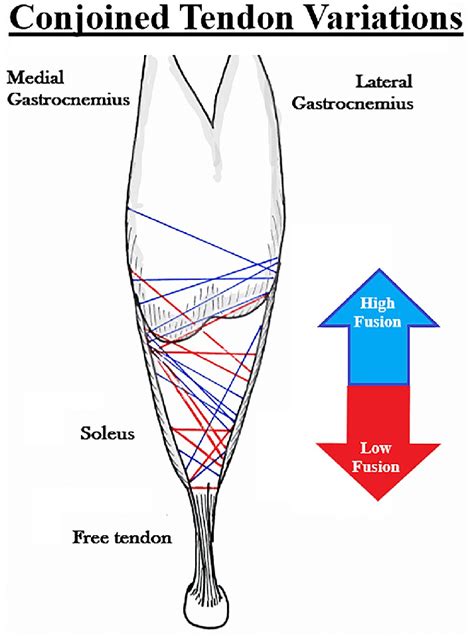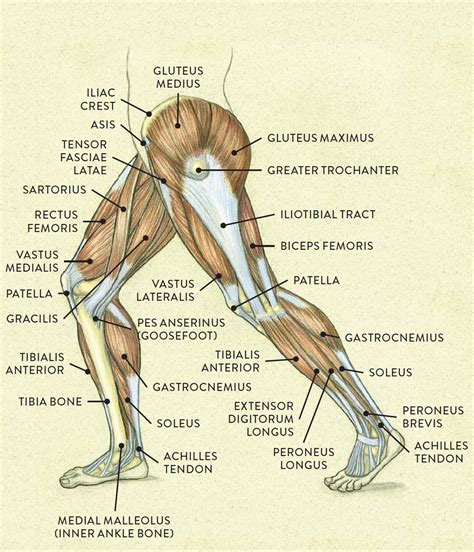If you’re an athlete or someone who enjoys running, hiking, or playing sports, you know how important it is to have strong and healthy leg tendons. But what happens when you start to experience pain or discomfort in your leg tendons?
There are a number of things that can cause leg tendon pain or discomfort, including:
- Overuse injuries: This is the most common cause of leg tendon pain. It can happen when you suddenly increase the intensity or duration of your exercise routine.
- Muscle imbalances: When the muscles around your knee are not balanced, it can put extra stress on your leg tendons.
- Poor biomechanics: If you have poor biomechanics, it can cause you to put extra stress on your leg tendons when you walk or run.
- Leg tendon injuries: Leg tendon injuries can range from minor strains to complete tears. They can be caused by a sudden injury, such as a fall or a collision, or they can develop over time as a result of overuse.
Target of Leg Tendon
The target of leg tendon dan word is to reduce pain and inflammation in the leg tendons. It can also help to improve range of motion and flexibility, and to strengthen the muscles around the knee. Leg tendon dan word can be used to treat a variety of leg tendon conditions, including:
- Achilles tendinitis
- Patellar tendinitis
- Hamstring tendinitis
- Peroneal tendinitis
- Leg tendon tears
Leg Tendon and Related Keywords:
Leg tendon dan word is a type of traditional Chinese medicine (TCM) that involves the insertion of small needles into the skin at specific points on the body. The needles are used to stimulate the flow of qi, or energy, through the body, which is believed to promote healing.
Leg tendon dan word is often used to treat pain and inflammation in the leg tendons. It can also be used to improve range of motion and flexibility, and to strengthen the muscles around the knee.
Leg tendon dan word is a safe and effective treatment for a variety of leg tendon conditions. It is a good option for people who are looking for a natural and drug-free way to relieve pain and inflammation.
Summary:
Leg tendon dan word is a type of TCM that can be used to treat pain and inflammation in the leg tendons. It can also help to improve range of motion and flexibility, and to strengthen the muscles around the knee. Leg tendon dan word is a safe and effective treatment for a variety of leg tendon conditions. It is a good option for people who are looking for a natural and drug-free way to relieve pain and inflammation.
Leg Tendon: An Exploration of the Japanese Art of Rope Tying
Introduction: Unveiling the Essence of Leg Tendon
In the realm of Japanese culture, Leg Tendon Dan Word, also known as “Shibari,” stands as a unique and captivating art form that has enthralled practitioners and enthusiasts alike for centuries. Rooted in ancient traditions, this intricate practice involves the skillful use of ropes to bind individuals in elaborate and aesthetically pleasing patterns. Beyond its visual allure, Leg Tendon Dan Word carries deep cultural significance, reflecting a harmonious blend of art, sensuality, and spiritual exploration.
Historical Origins: Tracing the Roots of Leg Tendon
The precise origins of Leg Tendon Dan Word remain shrouded in mystery, with its roots traced back to ancient times. Some scholars believe that the practice emerged from the Edo period (1603-1868), while others posit that it has even earlier origins. Initially employed as a form of restraint, Leg Tendon Dan Word gradually evolved into an art form, captivating audiences with its intricate patterns and sensual overtones.
Exploring Its Aesthetic Appeal
Leg Tendon Dan Word draws its allure from the interplay of intricate ropework, graceful lines, and the human form. The ropes, carefully arranged and knotted, create patterns that highlight the curves and contours of the body, evoking a sense of both beauty and sensuality. The resulting compositions often resemble works of art, captivating the viewer with their intricate details and harmonious balance.
Unveiling Its Deeper Meanings
Beyond its aesthetic appeal, Leg Tendon Dan Word delves into the realm of sensuality, exploring the delicate interplay between physical and emotional boundaries. The act of being bound and the sensation of ropes against the skin can evoke a range of emotions, from heightened awareness to a sense of surrender. For some, Leg Tendon Dan Word becomes a form of erotic expression, while for others, it represents a journey of self-discovery and exploration.
Unveiling Its Deeper Meanings
Leg Tendon Dan Word is deeply rooted in Japanese culture, reflecting traditional values and beliefs. It embodies the concept of “wa,” or harmony, emphasizing the interconnectedness of all things. The ropes, which bind individuals together, symbolize the unity and interdependence that exist within society. Additionally, Leg Tendon Dan Word has spiritual undertones, representing the idea of surrendering to a higher power and finding balance in life.
Exploring Its Modern Expressions
In contemporary times, Leg Tendon Dan Word has undergone a resurgence of interest, gaining recognition as a legitimate art form. It has found expression in various domains, including performance art, fashion, and even film. Artists have incorporated Leg Tendon Dan Word into their work, using it as a means to explore themes of identity, sexuality, and the human condition. The practice has also gained popularity in the realm of erotic entertainment, where it is often associated with bondage and submission.
Unveiling Its Artistic Nuances
Leg Tendon Dan Word encompasses a diverse range of techniques and forms, each with its unique characteristics and artistic expression. Some of the most prominent forms include:
- Kinbaku: This traditional form of Leg Tendon Dan Word involves the use of ropes to bind individuals in elaborate patterns, often emphasizing symmetry and balance.
- Hojojutsu: This more dynamic form incorporates elements of martial arts, with ropes used to control and restrain opponents.
- Shibari: This contemporary form focuses on the sensual and erotic aspects of Leg Tendon Dan Word, exploring the interplay between bondage and submission.
Variations and Styles within Leg Tendon : Unveiling Its Diversity
Within the broad spectrum of Leg Tendon Dan Word, numerous variations and styles have emerged, each reflecting the unique perspectives and interpretations of individual practitioners. These variations may differ in terms of the types of ropes used, the complexity of the patterns created, and the overall aesthetic and emotional impact. Some notable variations include:
- Japanese Style: This traditional style emphasizes intricate ropework and symmetrical patterns, often incorporating cultural and spiritual symbolism.
- Western Style: This more contemporary style tends to be more experimental, incorporating elements from other art forms and exploring unconventional techniques.
- Erotic Style: This style focuses on the sensual and erotic aspects of Leg Tendon Dan Word, utilizing ropes to evoke arousal and heighten sexual pleasure.
Leg Tendon : Exploring Its Artistic Recognition
In recent years, Leg Tendon Dan Word has gained increasing recognition within the art world, challenging traditional notions of what constitutes art. Artists have incorporated Leg Tendon Dan Word into their work, using it as a means to explore themes of power, vulnerability, and the human condition. Exhibitions and installations featuring Leg Tendon Dan Word have been showcased in galleries and museums around the world, sparking discussions about the boundaries of art and the role of the body in artistic expression.
Navigating Ethical and Cultural Considerations
Despite its growing recognition, Leg Tendon Dan Word continues to face challenges and controversies. Some critics question its artistic merit, arguing that it is merely a form of erotic entertainment. Others raise ethical concerns regarding the potential for exploitation and abuse within the practice. Navigating these challenges requires a thoughtful and responsible approach, one that respects the cultural significance of Leg Tendon Dan Word while addressing legitimate concerns about safety, consent, and artistic integrity.
The Future of Leg Tendon : Envisioning Its Evolution
As Leg Tendon continues to evolve, its future holds both opportunities and challenges. The growing interest in the practice presents opportunities for further artistic exploration and recognition. However, it is crucial to address the ethical and cultural concerns surrounding Leg Tendon Dan Word in order to ensure its responsible and respectful practice. By fostering open dialogue, establishing clear guidelines, and promoting a culture of consent and safety, the future of Leg Tendon Dan Word can be shaped in a way that honors its artistic legacy while safeguarding the well-being of its practitioners.
Leg Tendon stands as a captivating and enigmatic art form that has captivated practitioners and enthusiasts for centuries. Its intricate ropework, sensual overtones, and cultural significance have ensured its enduring fascination. As Leg Tendon Dan Word continues to evolve in the modern world, it faces both challenges and opportunities. By embracing its rich heritage, addressing ethical concerns, and fostering a culture of respect and safety, the future of Leg Tendon Dan Word can be shaped in a way that preserves its artistic integrity while ensuring its responsible and respectful practice.

